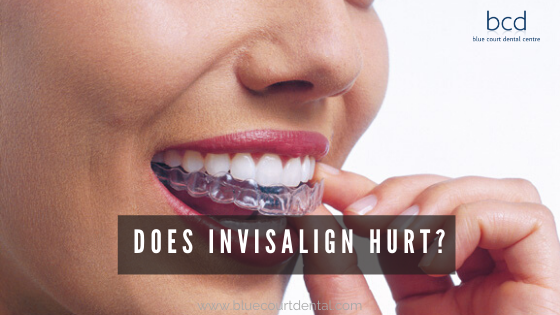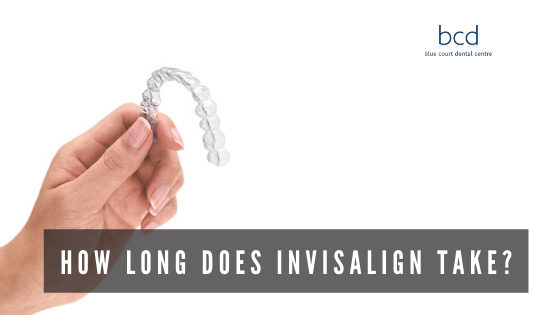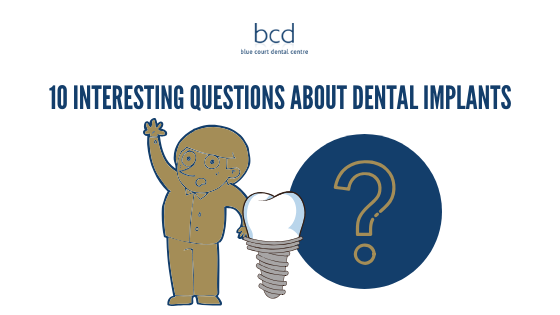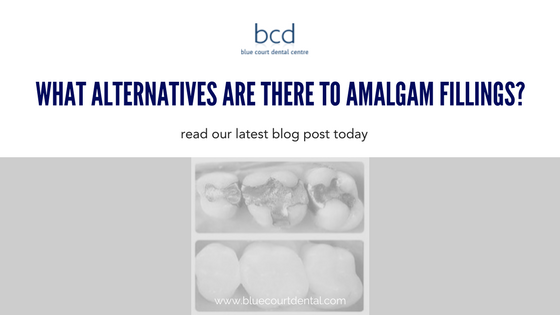Category: Dentistry
Blog posts and articles about general dentistry treatments from Dr Nishan Dixit, your Harrow dentist
How Long Does Invisalign Take?
Teeth Falling Out – Dreams, Myths and Facts
Can you straighten teeth with veneers?
Do Braces Hurt?
10 Interesting Questions About Dental Implants
Ways to manage your dentist fear
Why do I have tooth sensitivity?
Many people suffer from sensitive teeth for a variety of reasons, this article highlights why you may suddenly develop sensitive teeth, what you can do about it at home, what treatments the dentist may be able to offer you and how to reduce the pain from tooth sensitivity.
What causes tooth sensitivity?
 Your teeth are made up of three primary layers:
Your teeth are made up of three primary layers:
- The nerve and pulp. This is the deepest living part of your tooth, it contains the nerve and has blood flowing through it to keep your tooth alive, it is protected by two out of protection layers.
- The dentine. This is the softer portion of your tooth, it gives the tooth it’s primary colour and its role is to support the hard yet brittle outer enamel.
- The enamel. This is the hardest substance in the human body and protects the outer portion of your tooth.
Sensitivity occurs when hot or cold substances, such as eating ice cream, get too close to the nerve, there are many reasons this could happen, including:
- Tooth wear caused by over brushing.
- Gum recession caused by over by over brushing or general ageing.
- Cracked teeth caused by trauma.
- Decay in teeth caused by poor oral hygiene.
- Tooth grinding or clenching.
Why are my teeth suddenly sensitive?
The key to understanding this is to think about how the hot or cold feeling may be getting through to the nerve. If you have had a recent trauma then perhaps the tooth is correct. If you haven’t been to the dentist for a while perhaps there is an area of tooth which is decayed.
The image below shows gum tissue recession around the gum line, possibly caused by over brushing. The enamel is thin in this area which can easily lead to teeth sensitivity.
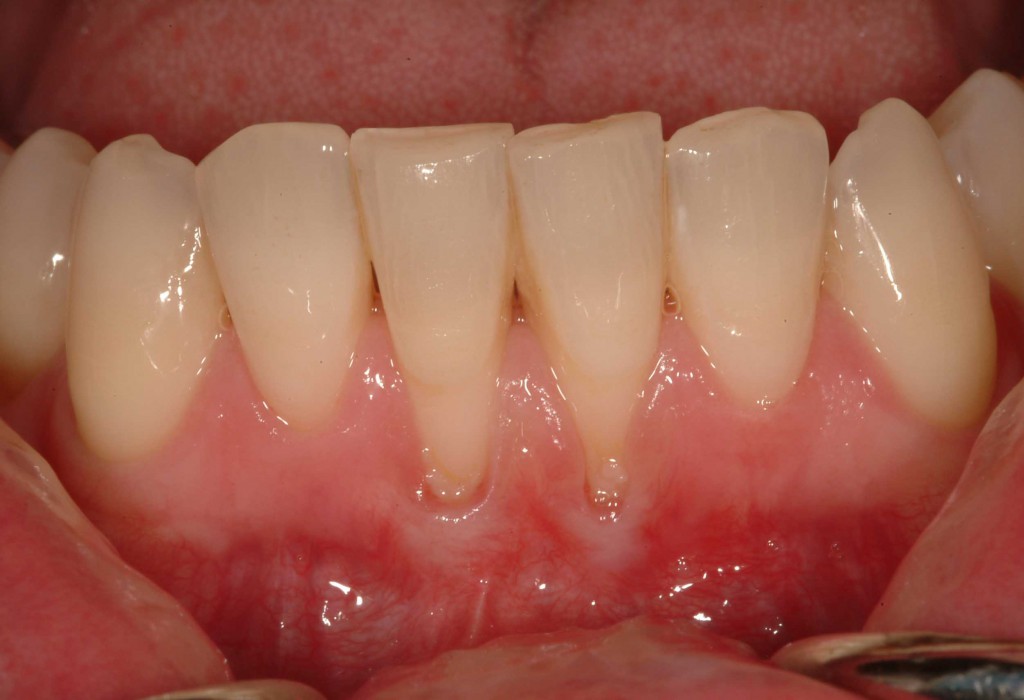
If you can’t immediately identify what the problem is then visiting a dentist or dental hygienist may be best option.
How do you stop sensitive teeth pain
If you have sensitive teeth with no obvious cause then you may find that using a protection and relief toothpaste such as Sensodyne may help.
How does Sensodyne work?
These toothpastes work because there are tiny holes, called tubules, in the dentine of your tooth. If the enamel becomes eroded away then these tubules can transmit the hot and cold through your tooth. These toothpastes work by quickly creating a barrier so that the hot and cold feeling can’t be transmitted to the nerve.
However, it’s worth noting that these types of toothpastes WILL NOT work if the sensitivity is caused by excessive enamel or dentine loss such as cavities, excessive wear or cracks caused by trauma.
How long does tooth sensitivity last?
Tooth sensitivity is usually only instantaneous when the nerve becomes exposed to hot or cold. Remove the hot or cold and the sensitivity goes away. However, the reality is that this is not practical to do on a day by day basis, we have to eat and drink after all! Unfortunately, if your teeth are sensitive they won’t get better on their own, you will either need to use a relief and protection toothpaste or visit a dentist to ascertain why your teeth are sensitive.
What does the dentist do for sensitive teeth?
The basic premise for reducing tooth sensitivity is to protect the outer surface of the tooth to prevent the hot and cold sensations been transmitted through to the nerve, or in extreme circumstances to remove the nerve itself. There are a variety of ways of treating sensitivity at the dentist, including but not limited to:
- Fluoride treatments to strengthen tooth enamel. These fluoride gels can be applied topically at the dentist or trays can be provided for use at home.
- Bonding. Composite bonding materials can be used to bonded to the outer surface of the tooth to rebuild the enamel where it has been lost. This can cover up the dentin hypersensitivity.
- Surgical gum graft (Please see the explanation video below). If the sensitivity is caused by excessive gum resorption which exposes the more sensitive root of the tooth then a gum graft to replacing some of the gum tissue may be undertaken to cover up some of this exposed area around the gum line.
- Root canal. In extreme circumstances a root canal can be used to remove the nerve of the tooth. This is not normally a preferred option and will only be undertaken in extreme circumstances.
Summary
One of the key things to focus on is brushing your teeth and maintaining good dental care throughout your life, ensuring you brush and floss regularly. Tooth sensitivity is a common problem, particularly in later life as the gum becomes more exposed and the teeth wear. Certainly, this is one of the best ways to prevent tooth sensitivity. If you are older then be aware about using a soft bristled toothbrush, watching to ensure you don’t consume too many acidic foods and drinks and be aware if you grind your teeth. Cold air can also affect sensitivity, so you may find you need to wear a scarf in cold weather.
What alternatives are there to amalgam fillings?
One of the things most dental practices want to do is to offer you alternatives to treatments, having a dental filling is no exception. There are a wide range of options when it comes to treating tooth decay with a dental filling and in this blog post, our Harrow dentist, Dr Nishan Dixit discusses what alternatives there are to the classic silver amalgam filling.
Types of dental fillings in the UK
There are a variety of materials that can be used for a dental filling, each is selected depending upon the material properties, what the material needs to do and your clinical situation. Those materials include:
- Amalgam (silver coloured fillings).
- Composite (white fillings).
- Porcelain ( white fillings).
- Gold.
Amalgam Filling Alternatives
There are a few alternatives to amalgam fillings, these typically include restorative materials such as glass ionomer white fillings, composite white fillings, porcelain white fillings and even gold fillings although these are not used very often nowadays.
Amalgam fillings
Amalgam fillings are still commonly used in the UK, particularly in NHS dental practices. The material is relatively cheap, easy to work with and durable. Amalgam silver fillings contain a mixture of silver, tin and copper which is bound together with mercury.
Mercury poisoning is a concern of many people with amalgam fillings. The most risky time for release of free mercury is during placement and/or removal of an amalgam filling, this is due to release of mercury vapour. Having an amalgam filling removed can potentially release more mercury than leaving it in place.
Several studies have shown that the amount of mercury released from fillings is extremely low, especially when left in place. However, due to their typically unsightly nature and potential to release mercury many patients are preferring to opt for a more cosmetic option.
Another problem with amalgam fillings is that you can get what is known as an amalgam tattoo. This is where the dark silver colour from the amalgam shows through the front surface of the tooth creating a dark effect around the gum making it look like it has a tattoo.
Composite fillings
These are one of the most commonly used alternatives to mercury fillings. Composite fillings are mercury free and are often a blend of fine ceramic particles mixed with a composite material which sets when a special light is shone on it. The composite comes in a variety of tooth coloured shades so your dentist can select the right one for you. Composite fillings may wear faster than your natural teeth so you may need to have them replaced a little more often.
Amalgam fillings versus composite*
Property |
Amalgam |
Composite |
|---|---|---|
| Wear (1 highest 5 lowest) | 3 | 4 |
| Fracture resistance (1 worst 5 best) | 3 | 4 |
| Cost (1 expensive 5 cheaper) | 4 | 2 |
| Loss of tooth structure (1 least 5 most) | 4 | 2 |
| Health concerns (1 unhealthy 5 healthiest) | 1 | 4 |
How long do white fillings last?
White fillings typically last up to 10 years. Data shows that after five years approximately 75% of fillings remain. This has reduced to 50% after nine years. This is based upon research undertaken in 2001.
Can you have White fillings on front teeth?
Yes, white fillings on front teeth are often called dental bonding. They can either simply replace a small decayed area or cover the whole of the front of the tooth. They can also be used to add to teeth to make the teeth longer, if worn down, or to change the shape of a tooth.
Are there any side effects from white fillings?
Unlike amalgam where people are concerned about the side-effects from mercury, white fillings have a few inherent side-effects related specifically to the material used. Any side effects from a white filling are common to all types of filling and include:
- Numbing of the area due to the anaesthetic used.
- Sensitivity of the tooth for a few days afterwards.
How long after a filling can I eat
This depends upon the type of filling you have had, amalgam takes approximately 24 hours to harden completely, during this time you should eat softer foods and avoid anything sticky. The white filling is set and made completely hard by curing the composite with a light in the dental surgery. This theoretically means that you can eat straightaway after a white filling.
We do however recommend caution as you probably will have had an anaesthetic to numb the area whilst the filling was placed. It is better to wait until the anaesthetic subsides before eating as you should be careful of biting your cheek and tongue as these area are still numb.
*Subjective data based on experience. Individual properties may vary depending upon the size, position and age of the restorations including the skill of the dentist that placed the original restoration.
- Dr Dixit is the new President of British Academy of Cosmetic Dentistry - 28 May 2020
- Does Invisalign hurt? - 9 March 2020
- How Long Does Invisalign Take? - 27 February 2020
‘Teenager happy with natural, durable restorations’ – As seen in Dentistry
Dr Nishan Dixit describes a case where submerged primary molars were restored using a simple technique with Venus Pearl composite.


